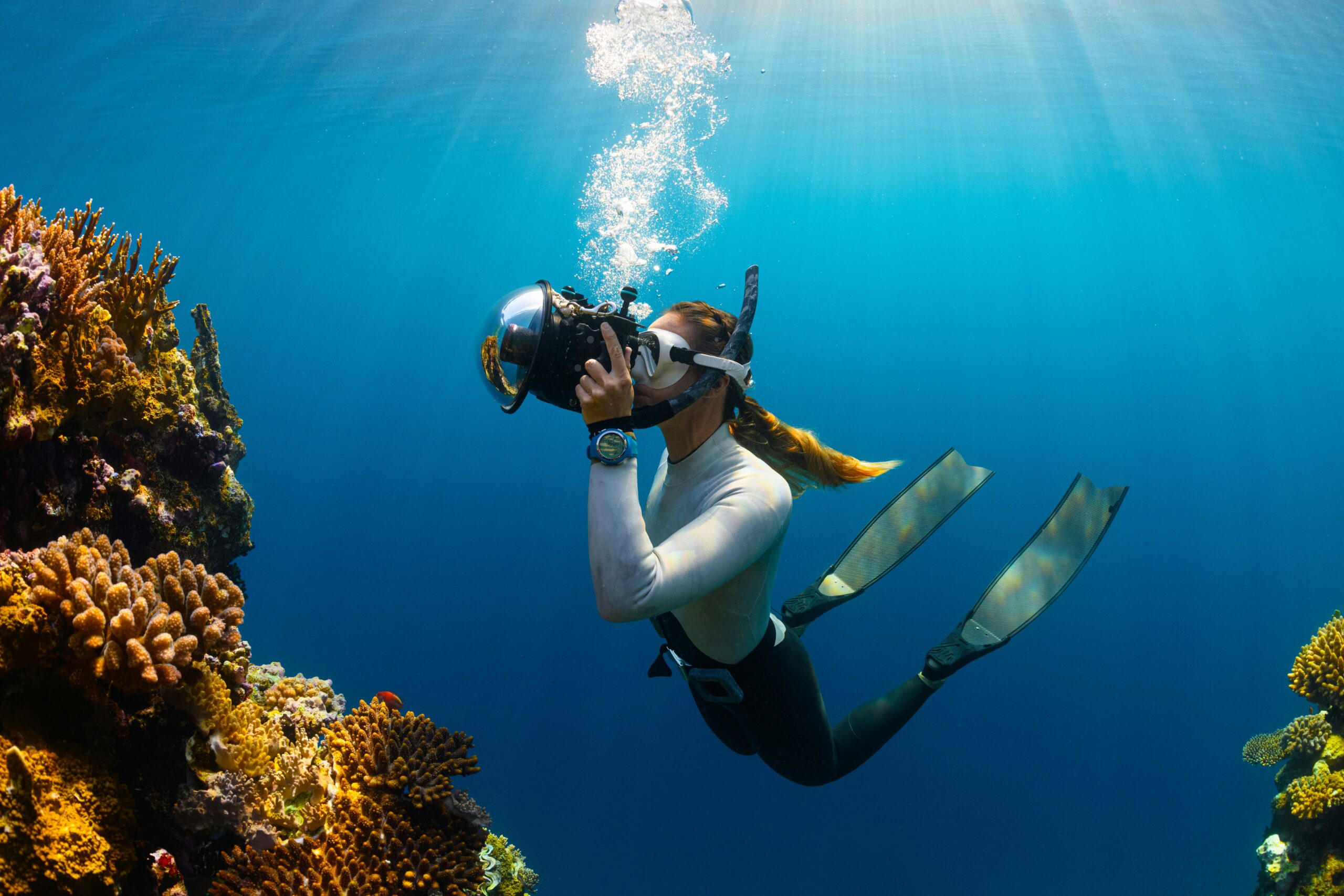Introduction to Scuba Diving in Sri Lanka
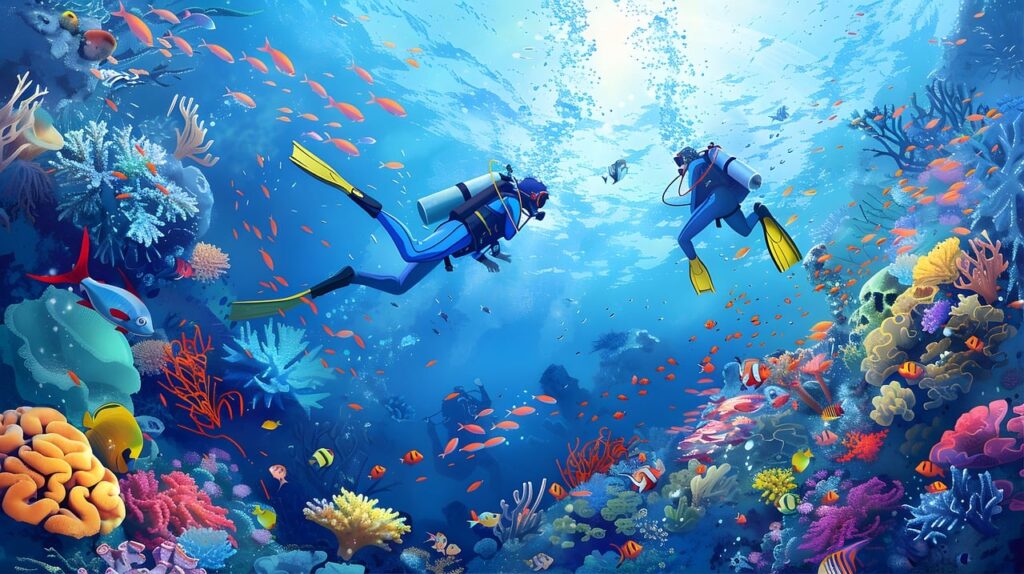
Sri Lanka has emerged as a prominent destination for scuba diving, attracting enthusiasts from around the globe. Its turquoise waters teem with vibrant marine life, making it one of the best scuba diving spots in Sri Lanka. With a rich tapestry of coral reefs, shipwrecks, and diverse aquatic species, the islands’ underwater ecosystem offers a captivating experience for beginners and expert divers alike. The favorable geographical location of Sri Lanka, situated in the Indian Ocean, provides a unique combination of warm waters and extensive coastlines, ideal for scuba diving activities.
Sri Lanka’s scuba diving popularity can be attributed to its astonishing biodiversity. Divers can encounter many species, from colorful reef fish to majestic sea turtles and even elusive whale sharks. In addition to the abundant marine life, the presence of several shipwrecks, known for their historical significance and ecological importance, adds to the allure of this aquatic paradise. Some of the best scuba diving spots in Sri Lanka include Hikkaduwa, Trincomalee, and Mirissa, each offering unique underwater landscapes and experiences.
When diving in these beautiful waters, safety remains paramount. Divers need to adhere to standard safety protocols, which include checking equipment before dives, staying aware of local conditions, and navigating underwater currents responsibly. It is advisable for divers, especially those new to the sport, to select reputable diving schools and guides who prioritize safety and responsible diving practices. Furthermore, the optimal time for scuba diving in Sri Lanka generally falls between November and April when visibility and conditions are at their peak, ensuring an enjoyable experience for all diving enthusiasts.
Factors to Consider When Choosing a Dive Spot
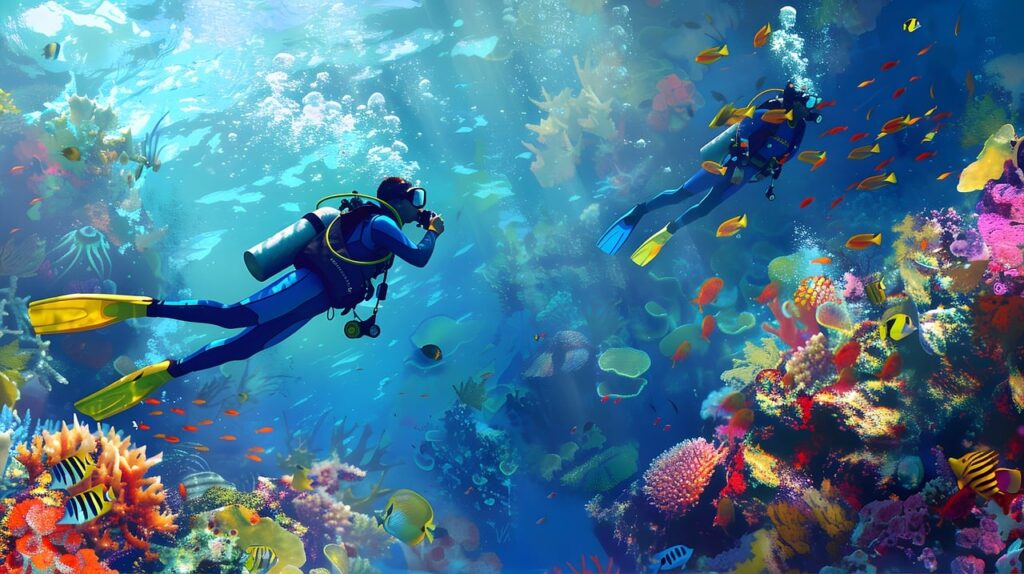
Selecting the ideal diving spot is crucial for both novice and experienced divers exploring the pristine underwater world of Sri Lanka. Several factors must be taken into consideration when identifying the best scuba diving spots in Sri Lanka.
Firstly, the types of dive sites available vary significantly, encompassing recreational dives, wreck dives, and even night dives. Recreational dives typically feature vibrant coral reefs and abundant marine life, making them suitable for those looking to experience the beauty of Sri Lanka’s underwater ecosystems. Wreck dives, found in various locations, offer a fascinating glimpse into the maritime history of the region, housing diverse marine flora and fauna that thrive in these submerged structures. Night dives, though more challenging, reveal an entirely different underwater landscape, populated by nocturnal creatures and bioluminescent organisms.
Water conditions are another critical aspect to consider. Factors such as currents and visibility can greatly affect the quality of a dive. Strong currents may be more suitable for experienced divers, while calmer waters are ideal for those who are newer to the sport. Visibility can also vary, with some locations offering crystal-clear water while others may present murky conditions, impacting the overall experience.
It is also important to assess the suitability of dive sites for various skill levels. Many of Sri Lanka’s scuba diving spots cater to a range of expertise, ensuring that both beginners and advanced divers can find appropriate challenges. This accessibility allows for enjoyable experiences across different abilities, enhancing divers’ skills and confidence.
Lastly, environmental considerations must not be overlooked. The health of coral reefs and marine ecosystems directly affects the quality of diving experiences. Sustainable diving practices should always be prioritized to protect Sri Lanka’s underwater environments, ensuring they remain vibrant and healthy for future generations of divers.
Top Dive Sites Along the West Coast
The west coast of Sri Lanka is renowned for its exceptional scuba diving spots, drawing enthusiasts from around the globe. Among the most popular sites is Colombo, the capital city, where scuba divers can explore an array of wrecks including the famous LSTR (Lanka Special Task Rescue) and the SS Pigeon Island. These dive sites not only offer an opportunity to observe diverse marine life but also to appreciate the underwater history of Sri Lanka. Depths typically range from 12 to 30 meters, catering to divers of varying experience levels.
Negombo is another significant diving locale, famous for its vibrant coral reefs and abundant tropical fish. Here, divers can expect to encounter species such as parrotfish, lionfish, and moray eels. The coral formations around Negombo create stunning underwater landscapes, making it one of the best scuba diving spots in Sri Lanka for both novice and experienced divers alike, with depth ranges suitable for all skill levels.
Hikkaduwa, often celebrated for its natural beauty, is also a prime diving destination. The Hikkaduwa Marine National Park showcases spectacular coral gardens and a lively ecosystem. Divers here can witness the impressive diversity of underwater life, including sea turtles and various reef fish species. The depth at Hikkaduwa varies from shallow areas of around 5 meters to deeper dive sites reaching up to 30 meters, allowing for a wide range of diving experiences. Hikkaduwa is particularly notable for the opportunity to engage in night dives, revealing a different perspective on marine biodiversity.
Overall, the west coast of Sri Lanka offers some of the best scuba diving spots that captivate both seasoned divers and beginners. With its rich marine life and unique underwater features, scuba diving in Sri Lanka is an experience that promises adventure and discovery.
Exploring the East Coast Dive Experiences
The east coast of Sri Lanka, renowned for its stunning natural beauty, also offers some of the country’s best scuba diving spots. Among these, Trincomalee and Batticaloa stand out for their diverse underwater environments and vibrant marine life. Trincomalee is particularly famous for its clear waters and abundant coral reefs, making it an essential destination for both novice and experienced divers. The area boasts an impressive array of marine species, including colorful reef fish, sea turtles, and occasionally, even majestic manta rays.
One of the key attractions in Trincomalee is the world-renowned wreck dive at HMS Hermes, which is not only an exciting dive site but also holds historical significance. This site is accessible throughout the year; however, the best time to experience scuba diving in Sri Lanka’s Trincomalee region is generally from May to September when conditions are optimal for underwater explorations.
Moving further down the coast, Batticaloa offers an equally captivating diving experience. Known for its tranquil waters, this area is less frequented by tourists, providing a more intimate interaction with underwater life. Divers can explore various coral formations, seagrass beds, and an array of marine life peculiar to the region. The highlight of Batticaloa is the lagoon, renowned for its bioluminescent plankton, creating a mesmerizing night diving experience.
The best time to dive in Batticaloa is from March to October when visibility is at its peak and marine activity flourishes. Both Trincomalee and Batticaloa deliver exceptional Sri Lanka scuba diving experiences, showcasing the region’s biodiversity and archaeological treasures, making them top contenders among the best scuba diving spots in Sri Lanka.
Wreck Diving Adventures in Sri Lanka
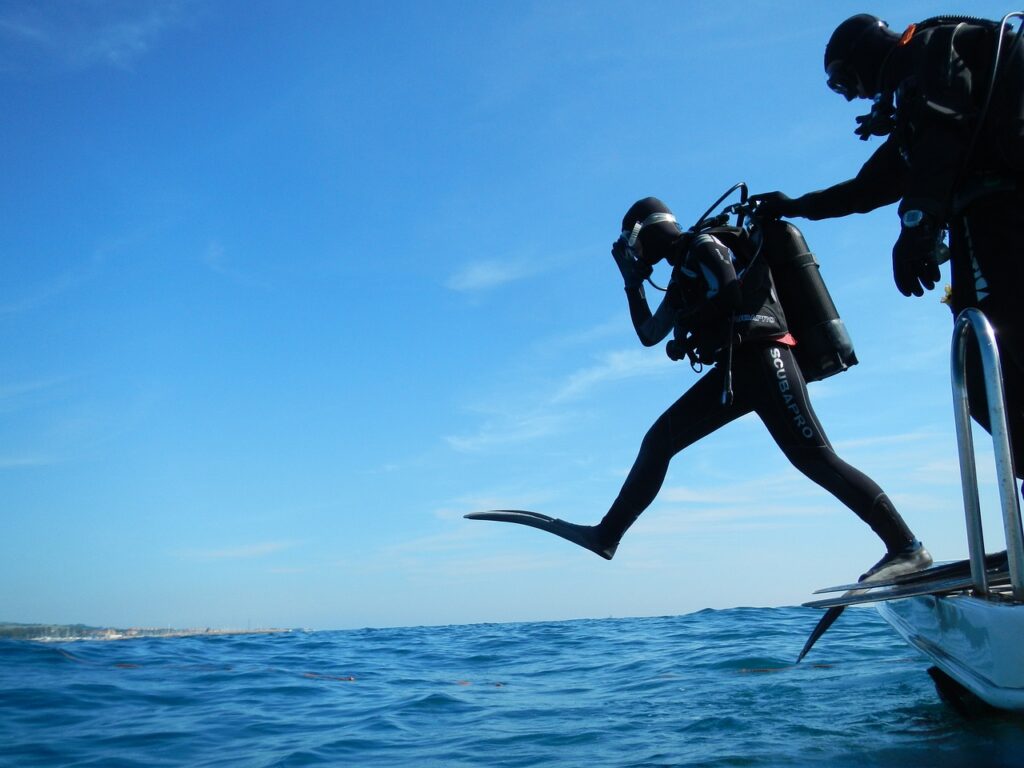
Sri Lanka, an island nation adorned with stunning coastlines, boasts some of the world’s most captivating scuba diving spots. Among these, wreck diving stands out as a thrilling experience, attracting both novice and seasoned divers alike. The serene waters surrounding Sri Lanka conceal numerous shipwrecks, each with its unique historical nuance, making them popular sites for exploration. Notable wreck diving locations include the wreck of the HMS Hermes, the world’s first aircraft carrier sunk during World War II, and the SS Pregnant, a cargo ship that sank off the coast of Trincomalee.
Diving into these submerged relics allows divers to witness rich marine ecosystems that have developed around the wrecks. Coral formations, vibrant sea fans, and diverse fish species inhabit these underwater structures, providing divers with exhilarating views. Common sightings include schools of colorful reef fish, lionfish, and even larger inhabitants such as turtles or the occasional shark. The combination of historical intrigue and vibrant marine life makes the wrecks some of the best scuba diving spots in Sri Lanka.
While wreck diving in Sri Lanka offers unmatched beauty and excitement, safety remains paramount. Before embarking on a wreck dive, it is crucial to assess the conditions of the site, including currents and visibility. Divers should be aware of the potential hazards associated with sharp objects and entanglements present within wrecks. It is advisable to dive with a guide familiar with the site, which ensures an enriching experience while maximizing safety. Personal equipment checks prior to descent and maintaining regular communication with diving buddies play critical roles in ensuring a safe diving adventure.
In conclusion, Sri Lanka’s wreck diving offerings provide an extraordinary blend of history, adventure, and marine beauty. Whether one is exploring famous wreck sites or venturing into lesser-known locations, the underwater world in Sri Lanka is waiting to be uncovered by those eager to experience its depths.
Experience Marine Life and Biodiversity
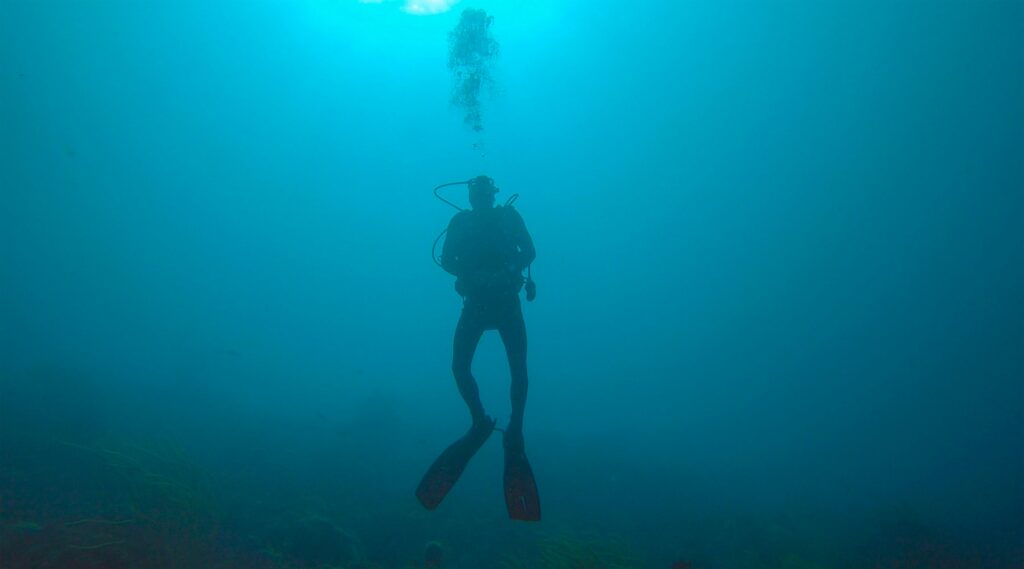
Sri Lanka is renowned for its vibrant marine life and biodiversity, making it one of the best scuba diving spots in Sri Lanka. The country’s waters are home to a rich array of species, ranging from colorful reef fish to magnificent pelagic creatures. The abundance of life in these waters is attributed to the diverse ecosystems present, including coral reefs, underwater caves, and shipwrecks.
Divers venturing into the Indian Ocean surrounding Sri Lanka can expect to encounter a variety of fish species, such as clownfish, parrotfish, and snapper, residing among the coral gardens. Notably, the coral reefs of Hikkaduwa, one of the formidable Sri Lanka scuba diving destinations, are exceptionally rich, providing not only a habitat for myriad fishes but also a crucial ecological system supporting marine life. The vibrant corals themselves are a wonder, exhibiting stunning colors and shapes that create an enchanting underwater landscape.
In addition to fish, Sri Lanka’s waters are frequented by majestic larger marine mammals such as whales and dolphins, particularly in areas like Trincomalee and Kalpitiya. These regions present exceptional opportunities for seasonal migrations, where divers may have the extraordinary chance to witness the migration of blue whales or playful spinner dolphins. As divers explore these underwater environments, they may also come across fascinating creatures like manta rays and sea turtles, particularly at popular dive sites such as Mirissa and the Jaffna Peninsula.
The unique biodiversity of Sri Lanka is enhanced by its commitment to marine conservation, ensuring that these precious ecosystems remain protected. This preservation not only supports the diverse habitats but also enriches the overall scuba diving experience. Undoubtedly, Sri Lanka stands out as a premier destination for divers seeking to immerse themselves in the stunning marine life that flourishes beneath the waves.
Eco-Friendly Diving Practices
Scuba diving in Sri Lanka offers an incredible opportunity to explore vibrant marine ecosystems rich in biodiversity. However, with this privilege comes the responsibility to protect these fragile environments. Eco-friendly diving practices play a vital role in preserving the underwater beauty of the best scuba diving spots in Sri Lanka. Adopting responsible behaviors while enjoying the depths can significantly reduce the adverse impacts on marine life.
One of the most crucial practices for divers is to maintain a safe distance from coral reefs and marine creatures. Touching coral or disturbing wildlife can cause harm to these ecosystems. Additionally, divers should avoid using harmful sunscreens that can pollute the water and damage reefs. Instead, opting for reef-safe products can help protect the delicate underwater balance. It is also important to collect any litter found underwater and dispose of it responsibly, as this can greatly contribute to the cleanliness of diving sites.
Many local dive shops in Sri Lanka are now increasing their efforts towards environmental conservation. Collaborating with these shops not only supports sustainability initiatives but also allows divers to participate in organized clean-up dives, enhancing the enjoyment of scuba diving while actively contributing to marine preservation. Engaging in trained courses focusing on marine conservation can further equip divers with the knowledge needed to protect the unique biodiversity found in Sri Lanka and its surrounding waters.
Encouraging divers to embrace sustainable tourism practices is essential for the longevity of Sri Lanka’s aquatic environments. By promoting awareness about the ecological importance of marine ecosystems, divers can become advocates for the protection of scuba diving spots in Sri Lanka. By fostering a culture of care and stewardship among divers, the beauty and vitality of Sri Lanka’s underwater world can be preserved for generations to come.
Where to Get Certified and Join Diving Tours
Sri Lanka is renowned for its vibrant marine life and stunning underwater landscapes, making it an ideal location for scuba diving enthusiasts. To make the most of your diving experience, obtaining a diving certification is essential. Several reputable dive schools across the country offer various courses, primarily focusing on internationally recognized programs such as PADI (Professional Association of Diving Instructors) and SSI (Scuba Schools International). These certification courses cater to divers of all skill levels, from beginners to advanced practitioners, enabling participants to explore the best scuba diving spots in Sri Lanka.
When searching for dive schools, it is crucial to select a center with a strong reputation and experienced instructors. Look for schools that are accredited and affiliated with recognized organizations to ensure a safe and enjoyable learning experience. Popular locations for diving certification include Hikkaduwa, Unawatuna, and Mirissa. Each of these places offers unique diving opportunities, enhancing the overall learning experience as students get to practice their skills in some of Sri Lanka’s most picturesque underwater habitats.
Upon obtaining your certification, joining guided diving tours is the next step to fully appreciating the underwater wonders of Sri Lanka. Numerous diving operators provide comprehensive tour packages that include transportation to various dive sites, equipment rental, and expert guidance from knowledgeable dive instructors. When considering a diving tour, it is essential to look for operators who prioritize safety, adhere to responsible diving practices, and have positive reviews from previous participants.
Additionally, inquire about the specific dive spots included in the tour, ensuring you visit the best scuba diving spots in Sri Lanka, which showcase the incredible biodiversity and historical shipwrecks the area has to offer. By choosing the right dive school and operator, you can embark on a memorable underwater adventure in Sri Lanka’s exquisite marine environment.
Best Time to Dive in Sri Lanka
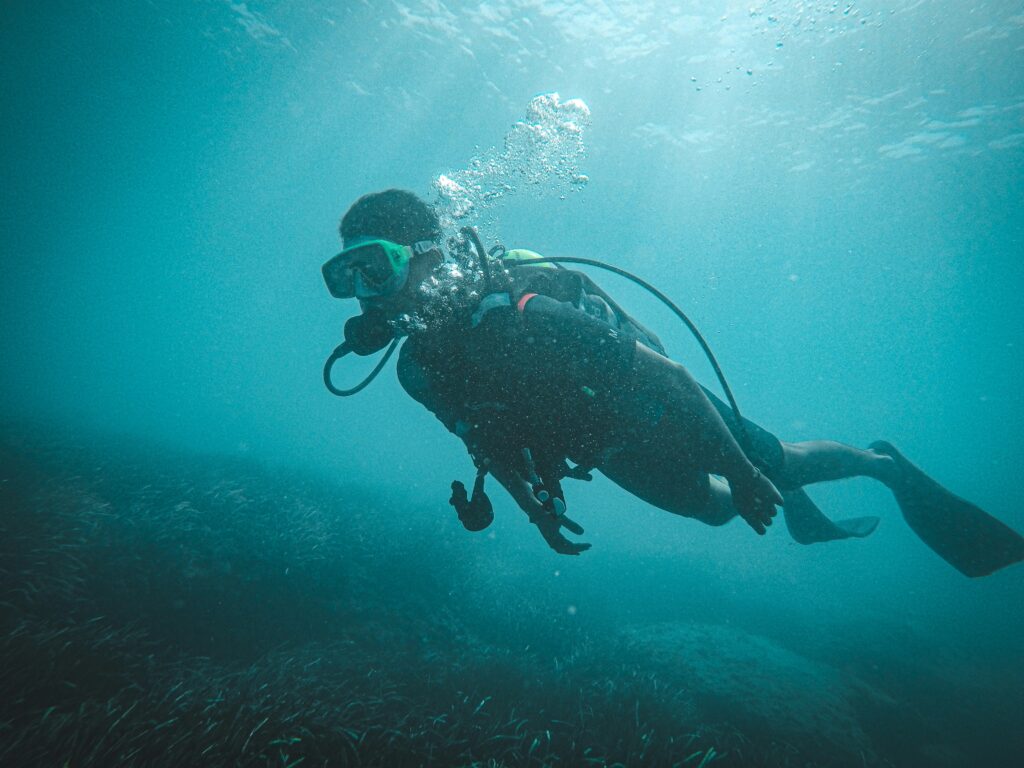
- West Coast (Negombo, Colombo, Hikkaduwa, Bentota): The best diving season is from November to April when the seas are calmer.
- East Coast (Trincomalee, Batticaloa): The prime time is May to October, offering great visibility and calm waters.
Let’s dive into the top spots where you can immerse yourself in the best of Sri Lanka’s underwater world!
1. Hikkaduwa: Vibrant Coral Gardens and Reef Dives
Hikkaduwa, located on the southwestern coast, is one of Sri Lanka’s most popular dive sites, known for its accessible coral reefs and calm conditions. It’s perfect for beginners and experienced divers alike.
- Highlights:
- Hikkaduwa Coral Sanctuary: A shallow reef filled with colorful corals, parrotfish, turtles, and rays. Ideal for first-time divers and snorkelers.
- Shipwrecks: Explore the Conch, a British oil tanker that sank in 1903, now transformed into a marine wonderland.
- Visibility: Generally ranges from 10 to 20 meters.
- Skill Level: Beginner to Intermediate.
Insider Tip:
The best visibility in Hikkaduwa is early in the morning. Make sure to book a dawn dive to experience the reef at its most serene.
2. Unawatuna and Galle: Wrecks and Turtles
Just a few kilometers from the colonial city of Galle, Unawatuna is another gem on the south coast. This region is famous for its variety of dive sites, including both reefs and wrecks.
- Highlights:
- Rangoon Wreck: A British steamer lying 32 meters deep, home to large schools of fish, including barracuda and trevally.
- Turtle Reef: A shallow reef where green and hawksbill turtles are frequently spotted.
- Visibility: 15 to 25 meters.
- Skill Level: Intermediate to Advanced, especially for deeper wreck dives.
Insider Tip:
Combine your diving trip with a visit to the historic Galle Fort, a UNESCO World Heritage site, for a perfect blend of underwater and cultural exploration.
3. Trincomalee: Deep Dives and Whales
On Sri Lanka’s northeastern coast, Trincomalee offers some of the best diving conditions between May and October. It is renowned for its clear waters and abundant marine life, making it a must-visit spot for divers.
- Highlights:
- Swami Rock: A dramatic underwater drop-off with spectacular coral formations and schools of reef fish.
- Navy Island: A beginner-friendly spot, offering glimpses of small reef sharks, stingrays, and more.
- Whale Watching: During the season, you might even spot blue whales and sperm whales near the dive sites!
- Visibility: 20 to 30 meters.
- Skill Level: Beginner to Advanced.
Insider Tip:
Stay near Nilaveli Beach, a pristine stretch of sand that offers a peaceful escape after a long day of diving.
4. Batticaloa: Wreck Diving Capital
Batticaloa, on the east coast, is a diver’s dream, especially for those fascinated by wrecks. With its relatively untouched reefs and famous World War II wrecks, it provides a unique diving experience.
- Highlights:
- The British Sergeant: This 120-meter-long British cargo ship, sunk during World War II, is one of Sri Lanka’s most famous dive sites. The wreck lies at a depth of about 25 meters and is home to a variety of fish, corals, and rays.
- Pigeon Island: A small island off the coast with beautiful coral gardens and plenty of reef fish.
- Visibility: 15 to 25 meters.
- Skill Level: Intermediate to Advanced.
Insider Tip:
The waters here can be rough, so it’s best to check with local dive centers about conditions before planning a dive.
5. Kalpitiya: Dolphins, Dugongs, and Coral Reefs
Kalpitiya, situated on the northwest coast, offers a different kind of diving experience. Known for its large dolphin pods and the elusive dugong, this area provides an opportunity to encounter rare marine species alongside beautiful coral reefs.
- Highlights:
- Bar Reef: Sri Lanka’s largest coral reef, teeming with marine life including butterflyfish, angelfish, and reef sharks.
- Dugong Watching: Kalpitiya is one of the few places where you might encounter the gentle dugong in its natural habitat.
- Visibility: 10 to 18 meters.
- Skill Level: Beginner to Intermediate.
Insider Tip:
Plan a trip between December and March for a chance to see the dolphin migration, with pods sometimes numbering in the hundreds.
Essential Tips for Scuba Diving in Sri Lanka
- Choose a Certified Dive Center: Ensure your safety by diving with a PADI or SSI-certified dive center. These centers maintain high standards of safety and equipment maintenance.
- Marine Conservation: Be mindful of the fragile coral ecosystems. Avoid touching corals and practice buoyancy control to minimize your impact.
- Carry Underwater Insurance: Consider diving insurance like DAN (Divers Alert Network) to cover any emergencies or medical evacuations.
How to Get to Sri Lanka’s Dive Sites
- International Access: Most international travelers will fly into Bandaranaike International Airport (CMB) in Colombo. From there, it’s easy to reach popular diving destinations on the west and south coasts.
- Domestic Travel: The East Coast dive spots like Trincomalee and Batticaloa can be accessed via domestic flights or a scenic train journey.
For more details on Sri Lanka’s travel requirements, visit the official tourism website.
Conclusion: Why Sri Lanka Should Be Your Next Diving Destination
Sri Lanka has rapidly become recognized as one of the premier locations for scuba diving enthusiasts worldwide. The country’s extensive coastline and crystal-clear waters are home to a plethora of marine life, making it one of the best scuba diving spots in Sri Lanka. Divers can explore vibrant coral reefs teeming with exotic fish species, which makes every dive a unique adventure in the rich underwater ecosystem.
The diversity of diving sites available in Sri Lanka is another significant reason to visit. From the iconic wreck dives off the coast of Galle to the stunning reefs in the shallow waters of Hikkaduwa, there is something for every level of diver. The variety of marine environments, including deep-sea dives, coral gardens, and serene lagoons, enhances the overall scuba diving experience. For those seeking new challenges, the Pigeon Island Marine National Park offers thrilling opportunities to encounter larger marine animals like turtles and reef sharks.
Furthermore, the cultural experiences that accompany scuba diving in Sri Lanka add an enriching dimension to any diving trip. After an exhilarating day beneath the waves, divers can explore the island’s rich history, including ancient temples and colonial architecture, or indulge in delectable local cuisine. Combining the adventure of diving with cultural exploration makes Sri Lanka a well-rounded destination.
In conclusion, Sri Lanka should undoubtedly be on your radar for your next diving adventure. With its splendid marine biodiversity, array of dive sites, and cultural treasures waiting to be discovered, it represents an unmatched scuba diving experience. Dive into the depths of Sri Lanka and create unforgettable memories in these unique underwater landscapes.
FAQs About Scuba Diving in Sri Lanka
Q1: Is Sri Lanka suitable for beginner divers?
Yes, Sri Lanka offers numerous dive sites that cater to beginners, such as the coral gardens of Hikkaduwa and the calm waters around Pigeon Island. Dive centers provide basic training for first-timers.
Q2: Do I need a diving license to dive in Sri Lanka?
A diving license is required for deeper dives and more advanced sites. However, many dive centers offer Discover Scuba Diving programs for unlicensed divers looking to experience the underwater world.
Q3: Are there any dangerous marine animals to watch out for?
While Sri Lanka’s waters are generally safe, it’s essential to follow your dive guide’s instructions. Jellyfish stings can occur, but proper dive gear usually offers protection.
Q4: What is the cost of a diving session in Sri Lanka?
Prices vary, but a single dive generally costs between $30 and $60 USD, depending on the location and the dive center. Packages or multi-dive deals can offer better value.
Q5: What kind of marine life can I expect to see?
Expect to see vibrant coral species, reef fish, sea turtles, rays, reef sharks, and occasionally, larger marine creatures like whale sharks and blue whales.
